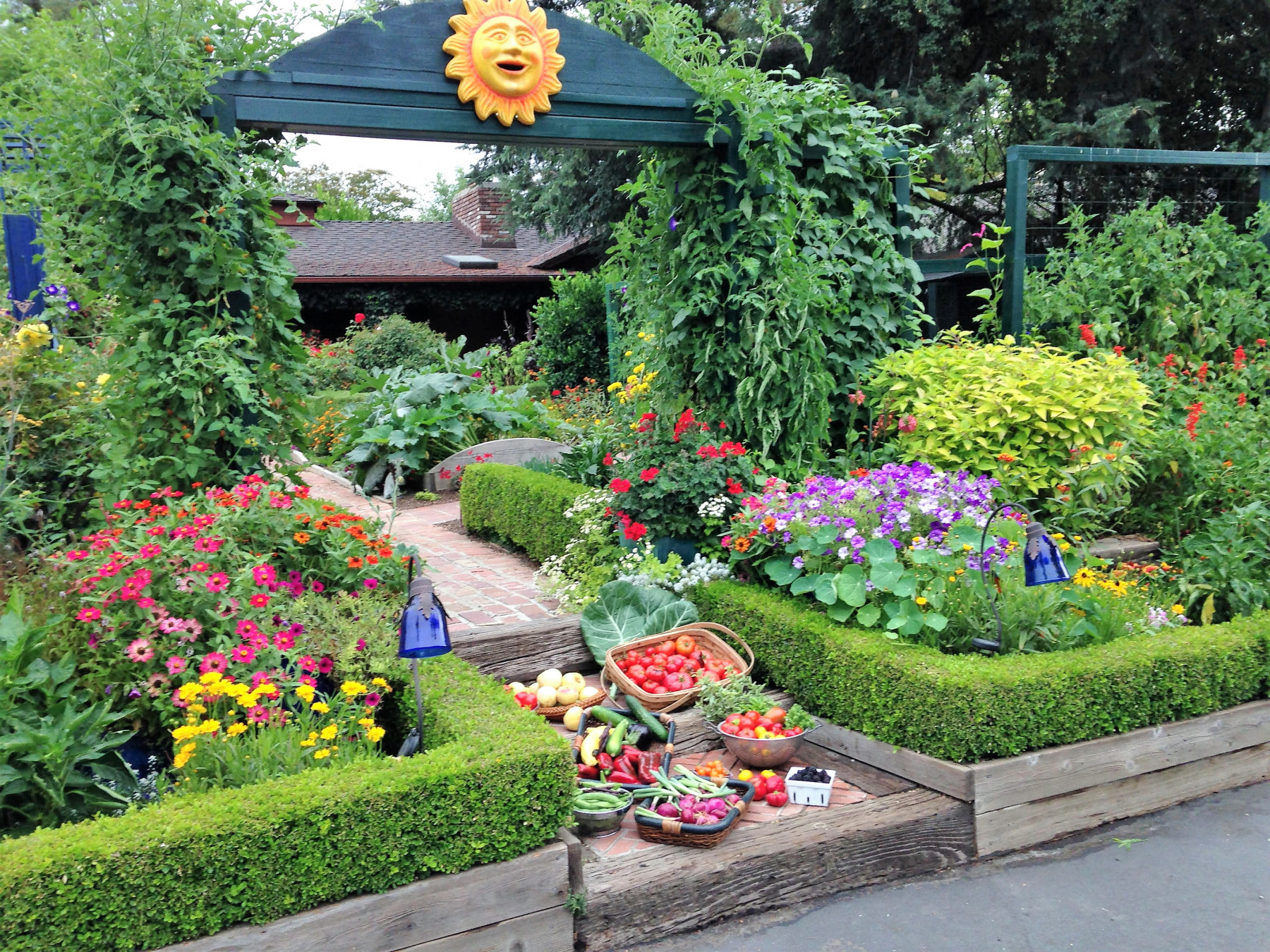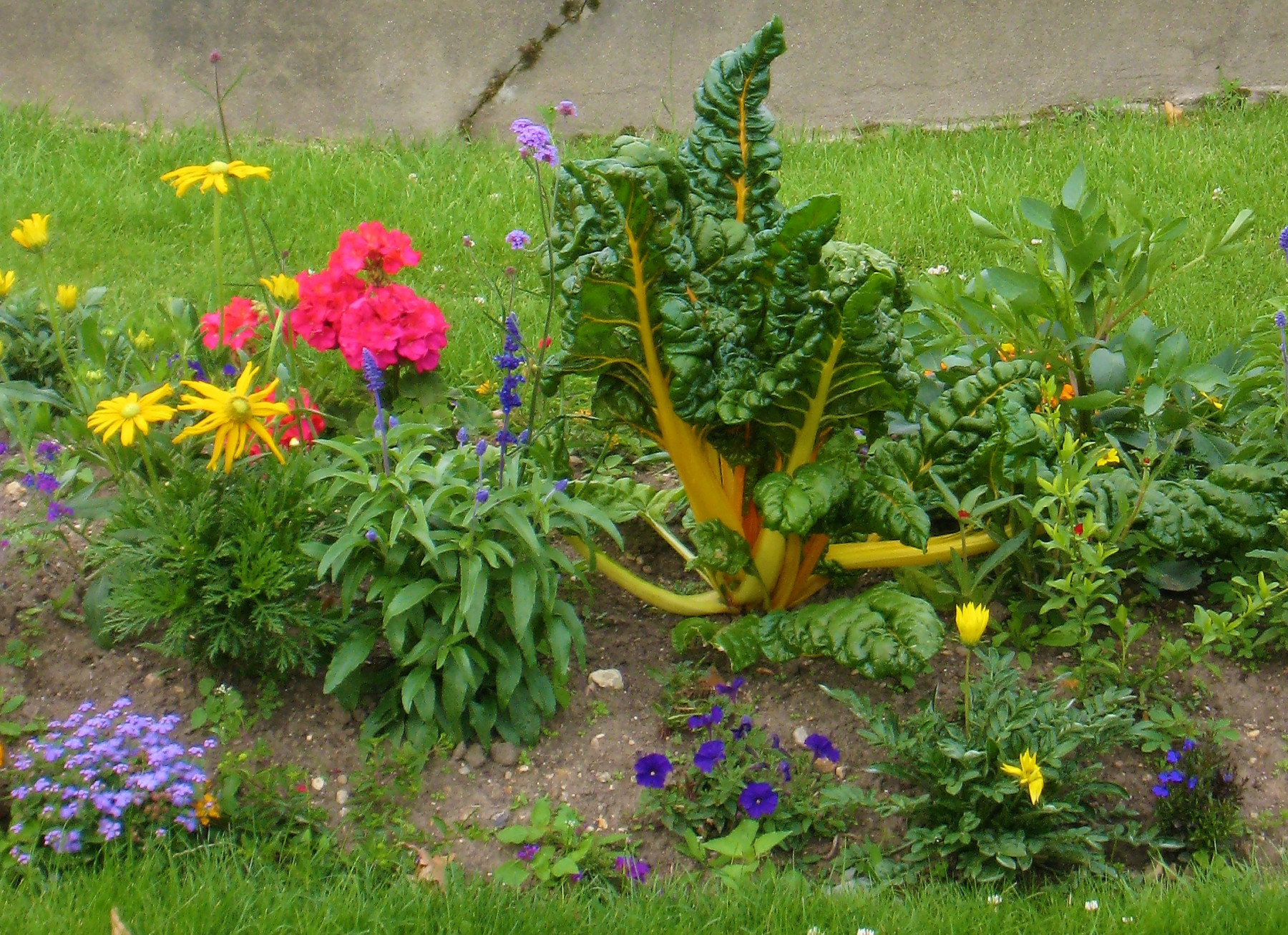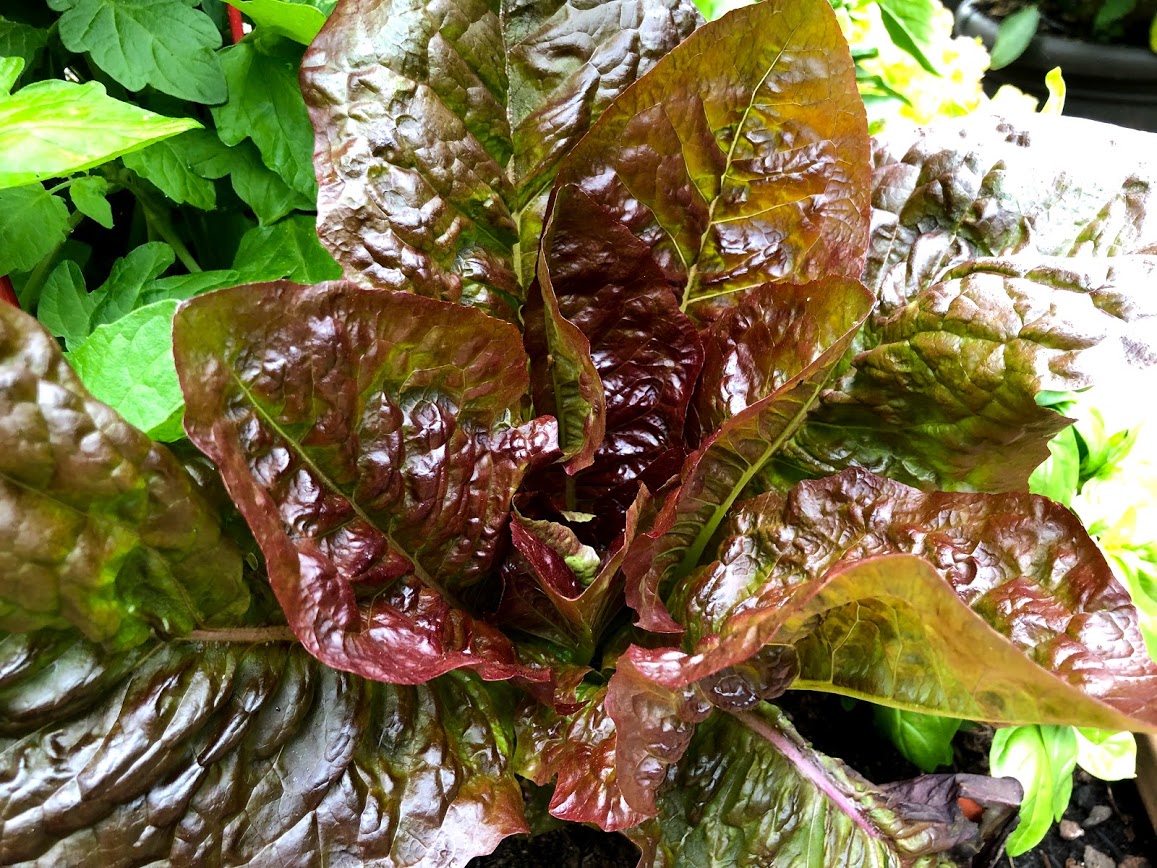
Looking for a spot in your garden to grow more edibles in this stay-at-home summer? But maybe you don’t want to tear up more lawn or build raised beds. So, consider planting fruits and vegetables in the existing ornamental borders around your home, where the soil is already turned, mulch may be down, and weeds, hopefully, haven’t taken over everything. Or plant in large containers, which in previous years may have held a riot of blooming annuals.
This mixing of edibles with ornamental plants is a long-standing tradition for Rosalind Creasy, noted garden author, (20 books) and environmentalist. She’s written the classic book, Edible Landscaping, first out in 2010 and now updated. Her latest book, The Culinary Herb Garden, has just gone into a second printing 4 months after its release.

But not everyone embraces the idea of veg in a landscape design. I asked Ros why. She told me, “People think vegetables won’t give you the color.” Really? Here are tips from Ros for successful mixing and matching.
Do it by halves. Ros suggests that in the spots where you’d usually put annuals in your beds and borders, swap out half that space for edibles instead. As you harvest through the season, the remaining annuals can fill in the gaps.
Make colorful plant partnerships. For instance, she says, “Some chard has really bright red stems, so put red pansies at the base to bring out that color.” Try begonias or impatiens with a block of red lettuces. “Or,” she says, “plant yellow chard behind the marigolds.”

Plant what you love. Of course, Ros cautions, “Only plant what you and your family like to eat.” One of the easiest to grow is garlic —and it looks great among flowering shrubs and other full-sun plants. But if your family doesn’t go for garlic, it won’t matter how good it tastes. It will be strictly ornamental.
Fill containers with moveable food. You can plant early and grow late. extending the season by trundling pots into a greenhouse or other sheltered area. Pay attention to the potting mix. “Put in potting soil and compost,” Ros says, “You want the good bacteria in there to make sure it’s alive. Then feed with an organic fertilizer.”
So, this year, why not tuck some edibles into whatever space you have? Who knows what kind of beautiful and surprising combinations you’ll make?


